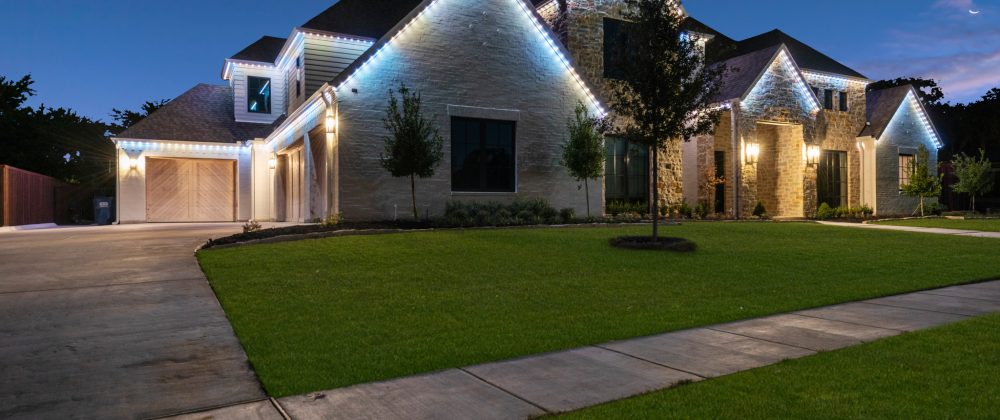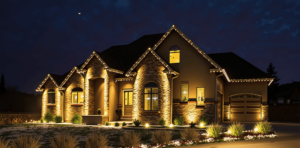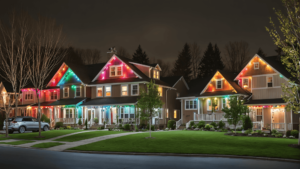Installing accent lights in outdoor spaces is a strategic way to enhance the ambiance and functionality of your property. Whether you’re illuminating a patio, garden, or pathway, thoughtful placement and selection of accent lighting can transform your outdoor area into a welcoming and inviting retreat.
In this comprehensive guide, we’ll explore the key factors to consider for accent lighting installation Austin to achieve the perfect outdoor ambiance.
Purpose and Functionality:
Before installing Austin house accent lights, it’s essential to determine their purpose and functionality. Consider how you plan to use the outdoor space and what activities will take place there. Are you looking to create a cozy atmosphere for entertaining guests, or do you need task lighting for cooking or reading? Understanding the intended function of the lights will help you choose the right fixtures and placement to achieve your desired ambiance.
Types of Accent Lights:
There are various types of Austin outdoor home accent lighting available for outdoor use, each offering unique benefits and effects. Common options include:
- Path Lights: Path lights are ideal for illuminating walkways, driveways, and garden paths, providing safety and guidance while adding visual interest to the landscape.
- Spotlights: Spotlights are directional lights that can be used to highlight architectural features, trees, or focal points in the garden, creating drama and depth in the outdoor space.
- Step Lights: Step lights are installed along staircases, decks, or patios to improve visibility and safety at night, preventing trips and falls while adding a decorative touch to the area.
- String Lights: String lights are versatile and decorative, perfect for wrapping around trees, pergolas, or outdoor seating areas to create a warm and festive ambiance.
Placement and Positioning:
Proper placement and positioning of accent lights are crucial for achieving the desired ambiance and maximizing their effectiveness. Consider the natural features of your outdoor space, such as trees, shrubs, and architectural elements, and identify areas that could benefit from additional illumination. Pay attention to shadows and glare when positioning lights to avoid harsh or uneven lighting effects.
Lighting Zones:
Divide your outdoor space into different lighting zones based on functionality and usage patterns. For example, you may have a dining area that requires bright, task-oriented lighting for meal preparation and eating, as well as a lounge area where softer, ambient lighting is more appropriate for relaxation and conversation. By creating distinct lighting zones, you can customize the ambiance of each area to suit its intended purpose.
Lighting Control:
Consider incorporating lighting control systems into your outdoor lighting design to enhance convenience and flexibility. Options range from simple timers and photocells to sophisticated smart lighting systems that allow you to adjust brightness, color, and scheduling remotely via smartphone or voice commands. Lighting control systems enable you to create custom lighting scenes for different occasions, such as parties, dinners, or quiet evenings at home.
Power Source and Wiring:
Determine the most suitable power source and wiring options for your outdoor accent lights based on their location and accessibility. Choose between hardwired fixtures that require professional installation and access to electrical outlets or battery-powered and solar-powered lights that offer more flexibility and ease of installation. Consider hiring a licensed electrician for hardwired installations to ensure safety and compliance with local building codes.
Weather Resistance and Durability:
Outdoor accent lights are exposed to harsh environmental conditions such as sunlight, rain, wind, and temperature fluctuations. Therefore, it’s essential to select fixtures that are weather-resistant and durable enough to withstand outdoor use. Look for lights made from corrosion-resistant materials such as aluminum, stainless steel, or plastic, and ensure that they have an IP rating indicating protection against dust and water ingress.
Aesthetic Considerations:
Finally, consider the aesthetic impact of accent lights on your outdoor space and choose fixtures that complement your existing landscape design and architectural style. Opt for cohesive finishes, shapes, and styles that harmonize with the overall look and feel of your property. Experiment with different lighting effects and color temperatures to create the desired ambiance and atmosphere in your outdoor area.
Conclusion:
Installing outdoor accent lighting for house Austin is an effective way to enhance the ambiance and functionality of outdoor spaces, creating a welcoming and inviting atmosphere for relaxation, entertainment, and enjoyment.
By considering factors such as purpose, types of lights, placement, lighting zones, control options, power sources, weather resistance, and aesthetics, you can achieve the perfect outdoor ambiance that reflects your lifestyle and enhances the beauty of your property.
With careful planning and thoughtful execution, accent lighting can transform your outdoor space into a luminous oasis that you’ll love spending time in year-round.
You May Also Like: How to Add Accent Lights to Your Home Interior?




